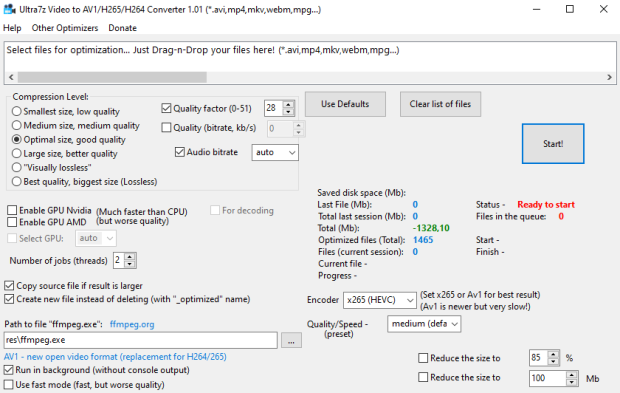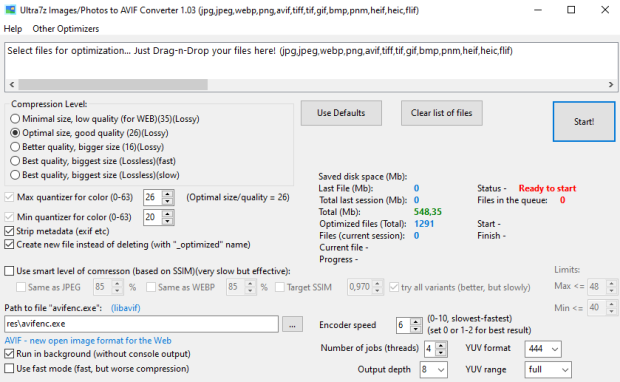
Video converter to modern formats AV1/H.265(HEVC)/H.264(AVC) with fast GPU acceleration for free! AV1 has high compression ratio – better than H.256/H.264. It allows you to save disk space for video storage. AOMedia Video 1 (AV1) is a modern open video format that provides superior lossy and lossless compression for video files (replacement for H264/265). One of the interesting features is that you can specify the desired file size, for example, 1400 MB for a movie (or as a percentage, for example, 80% of the original size), and the program will automatically select the conversion settings for the best quality. Support for encoding and decoding on AMD and Nvidia video cards provides very fast video conversion (several times faster than on the processor). Multithreading support also speeds up the video encoding process. Important: AV1, unlike H. 265 (HEVC), is open, meaning no one has to pay to use it. It uses program ffmpeg.exe. Batch processing of files and drag-n-drop. Program optimizes your file to new one with «_optimized» name ending (source file will remain intact). Reduce the size of your video files in one click! AV1 video files are 50% smaller in size compared to H.264 and 30% to H.265.
Continue reading
Tag Archives: av1
Ultra7z Images to AVIF Smart Converter 1.05

Convert your pictures JPEG/PNG/WEBP to smaller AVIF files (up to 10-50%)! High compression ratio – better than your programs / photo camera or smartphone. AVIF is a modern image format that provides superior lossy compression for images on the web. Using AVIF, webmasters and web developers can create smaller, richer images that make the web faster. It uses program avifenc.exe from LibAvif. Batch processing of files (drag-n-drop). Reduce the size of your image files in one click with ot without quality loss! Program optimizes your file to new one with «_optimized» name ending (source file will remain intact). Option for smart level of compression (based on SSIM). AVIF images are 50% smaller in size compared to JPEG and 20% to WEBP. Google Chrome released with full AVIF support.
Continue reading